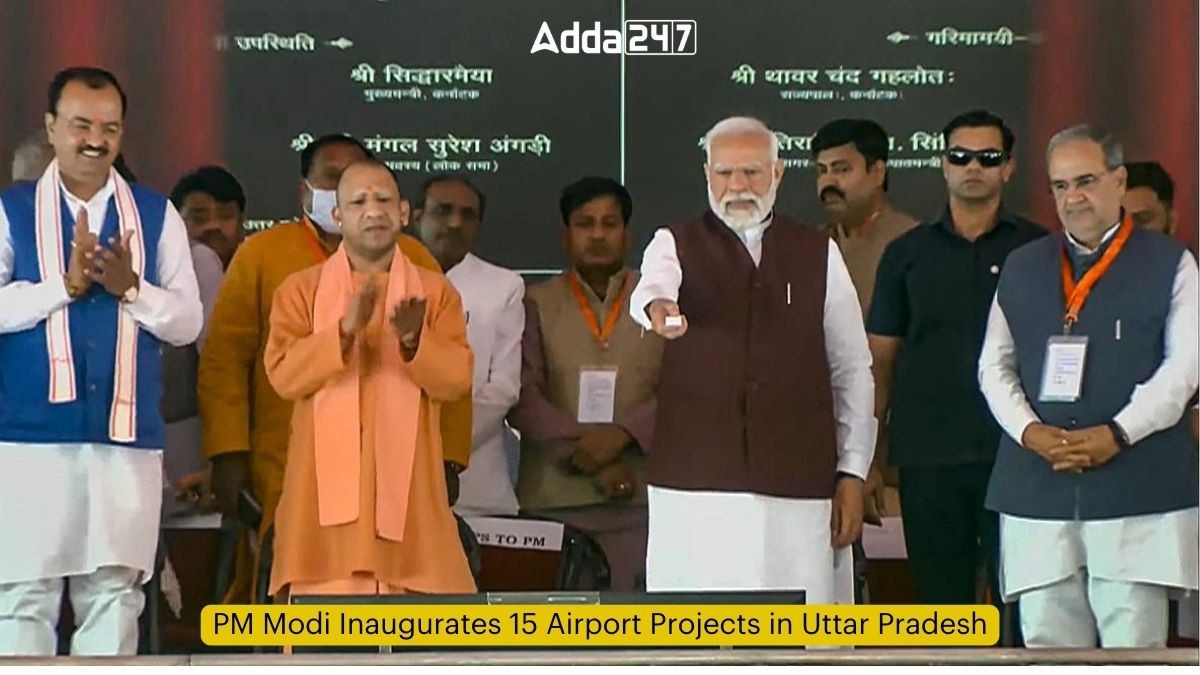On March 10, Prime Minister Narendra Modi made headlines by inaugurating 15 significant airport projects, marking an unprecedented infrastructural addition in Uttar Pradesh’s Azamgarh. This extensive initiative, almost valued at ₹10,000 crore, encompasses a blend of new airports, expanded terminals, foundation stones for future airports, and other ancillary facilities.
The Projects Unveiled
The highlight of this massive project rollout includes 12 new terminal buildings at airports across diverse locations such as Pune, Kolhapur, Gwalior, Jabalpur, Delhi, Lucknow, Aligarh, Azamgarh, Chitrakoot, Moradabad, Shravasti, and Adampur. Additionally, foundation stones were laid for new terminal buildings at Kadapa, Hubballi, and Belagavi airports, signaling a significant boost to India’s aviation infrastructure.
Uttar Pradesh Chief Minister Yogi Adityanath, among other dignitaries, graced the occasion, underlying the project’s significance for the state and the country.
Prior Achievements and Future Plans
In the fiscal year 2023-24, the Airports Authority of India (AAI) has already operationalized state-of-the-art new integrated terminal buildings at Chennai, Port Blair, Surat, and Tiruchirappalli Airports. Other inaugurations include new terminal buildings at Kanpur Airport, Rajkot International Airport, Tezu Airport, and Maharishi Valmiki International Airport in Ayodhya Dham. These projects are primarily aimed at enhancing passenger amenities and stimulating local economic growth.
Furthermore, the foundation for new terminals in Datia, Udaipur, Jodhpur, and Rajahmundry has been laid to accommodate future demands, emphasizing the government’s vision for a robust aviation network.
Financial and Capacity Highlights
The development of these 12 new terminal buildings is underway at an estimated cost of ₹8,903 crore. Upon completion, these terminals will collectively have the capacity to handle 615 lakh passengers annually, significantly increasing India’s passenger handling capability.
Moreover, the AAI has committed to developing three new terminal buildings at Kadapa, Hubballi, and Belagavi Airports with an investment of ₹908 crore, which will further enhance the passenger handling capacity to 95 lakh passengers per annum.
Emphasis on Sustainability and Cultural Heritage
In a nod to sustainability, these new terminals will feature double insulated roofing systems, energy-saving canopies, LED lighting, low heat gain double glazing units, and solar power plants to meet GRIHA ratings.
Reflecting India’s rich cultural heritage, the design of these airports incorporates elements from heritage structures of their respective states and cities. This approach aims to enrich the travel experience through murals, paintings, and architectural styles that showcase the local culture and heritage.
Impact on the Economy and Aviation Industry
The PMO’s press release highlighted the significant impact of these 15 airport projects, worth ₹9,811 crore, on India’s civil aviation industry. This move is expected to bolster economic growth, enhance air connectivity, boost tourism, and create employment opportunities, reinforcing India’s stature in the global aviation landscape.
With the inauguration of these projects, India’s aviation sector is poised for a substantial leap forward, promising an era of increased connectivity, economic prosperity, and cultural exchange.




 Parliament Passes SHANTI Bill, AERB Gets...
Parliament Passes SHANTI Bill, AERB Gets...
 Viksit Bharat G RAM G Bill Passed in Lo...
Viksit Bharat G RAM G Bill Passed in Lo...
 Bharat Taxi to Roll Out in January 2026 ...
Bharat Taxi to Roll Out in January 2026 ...







